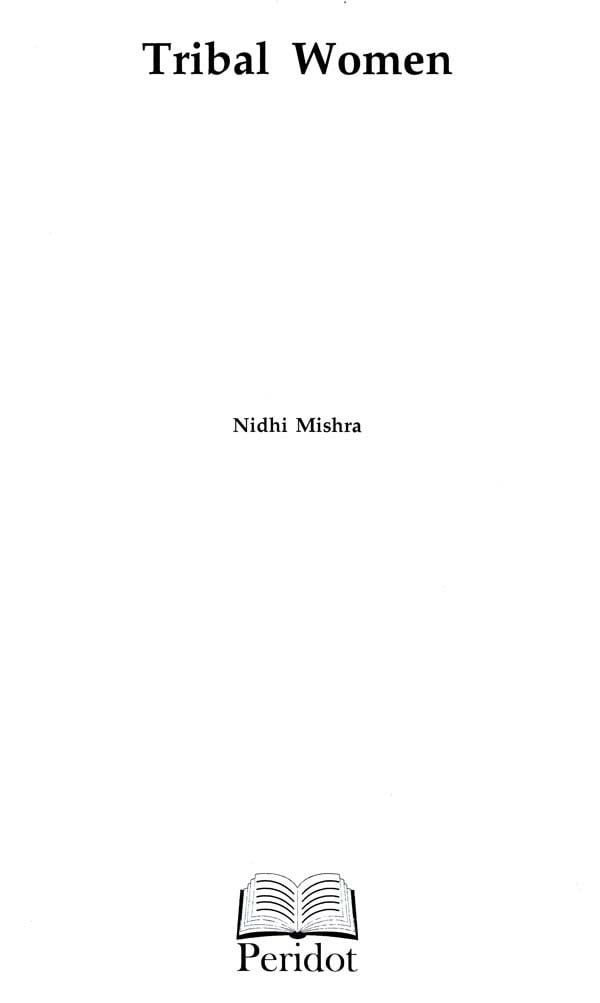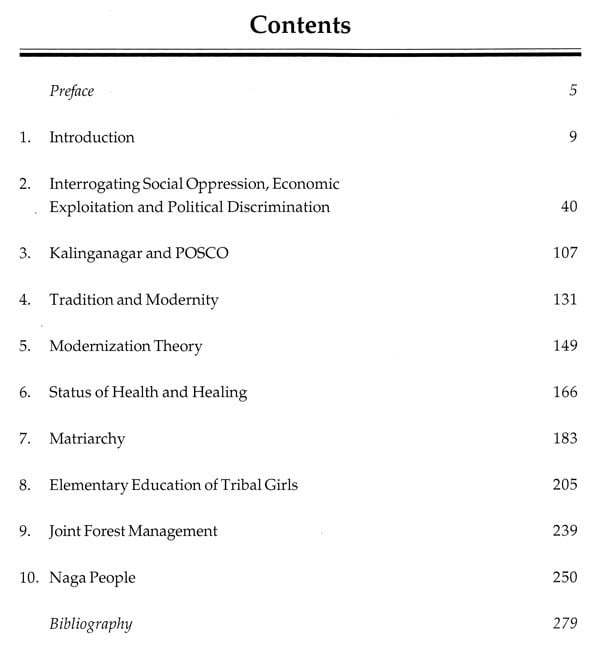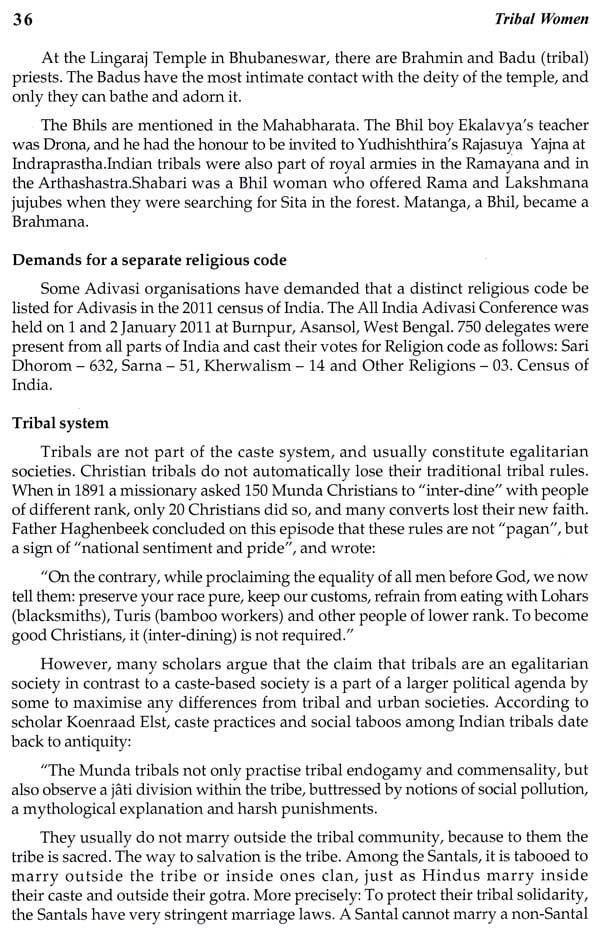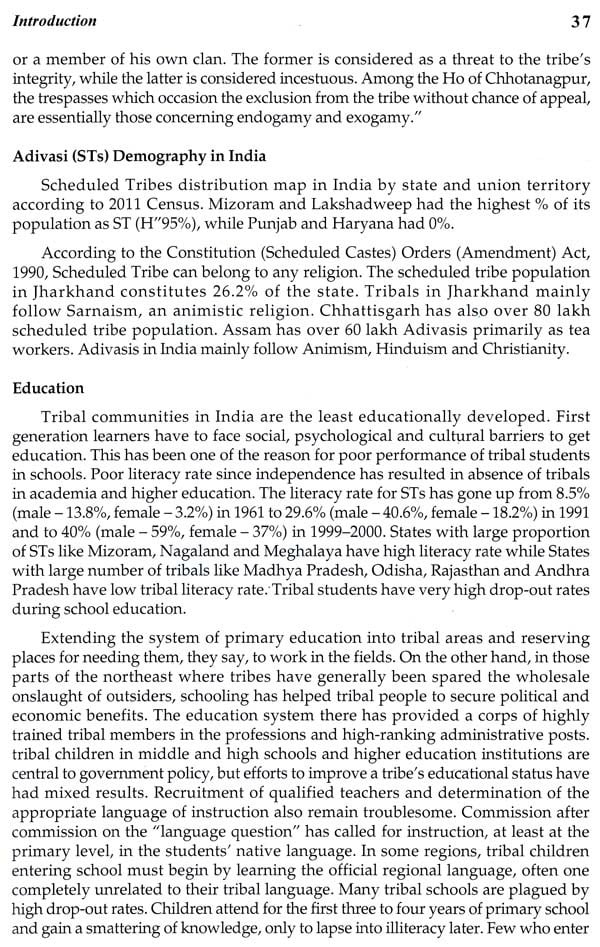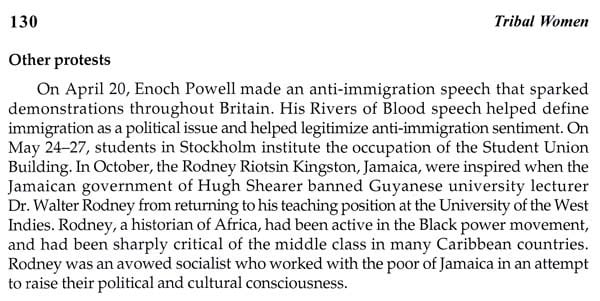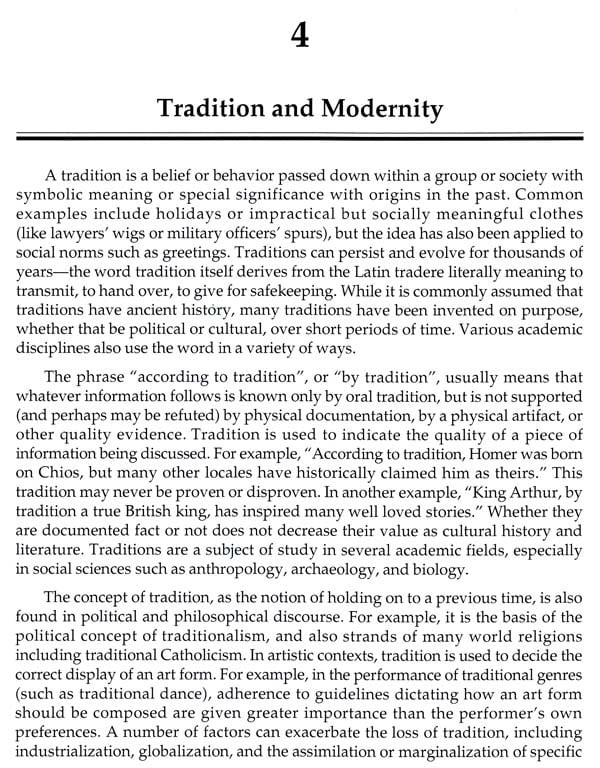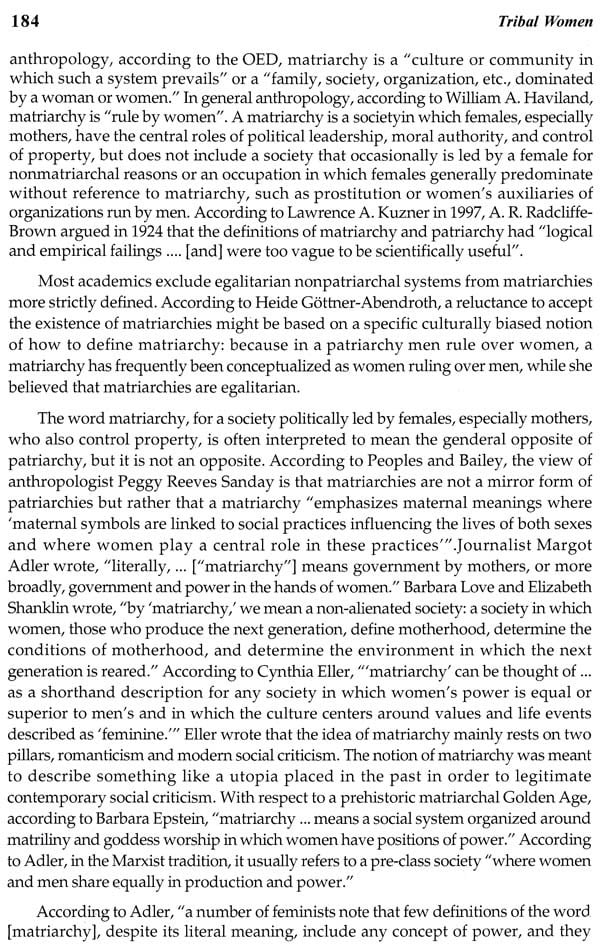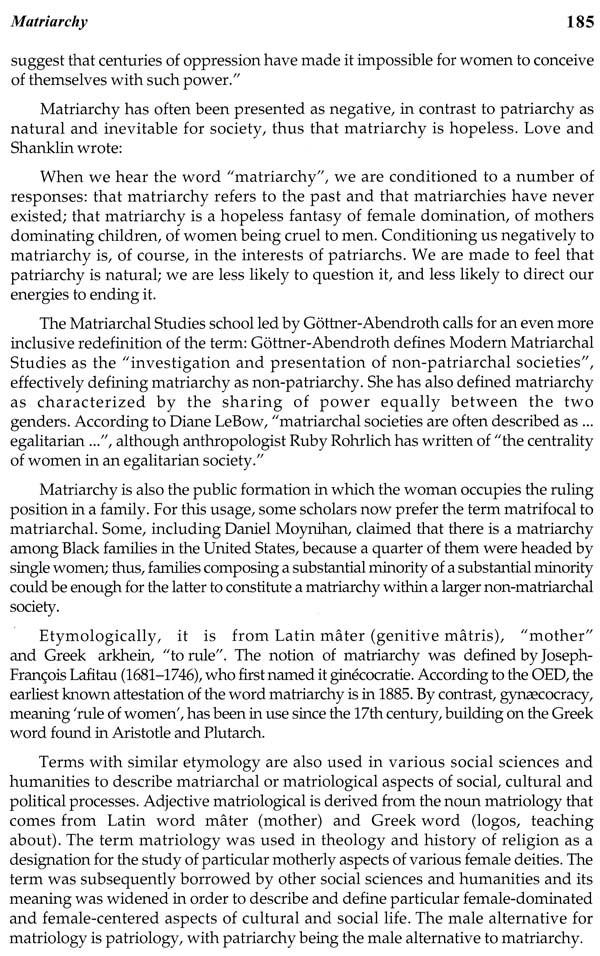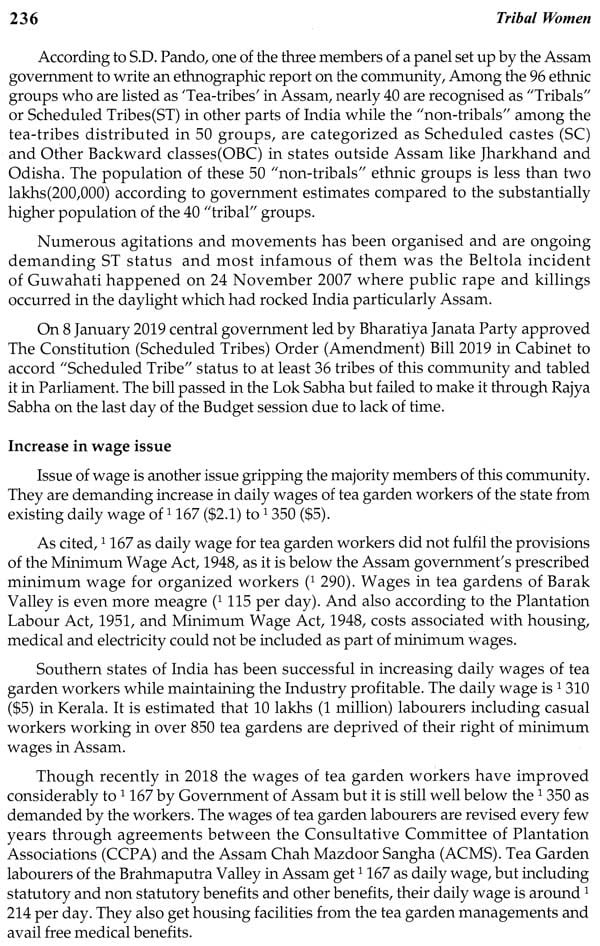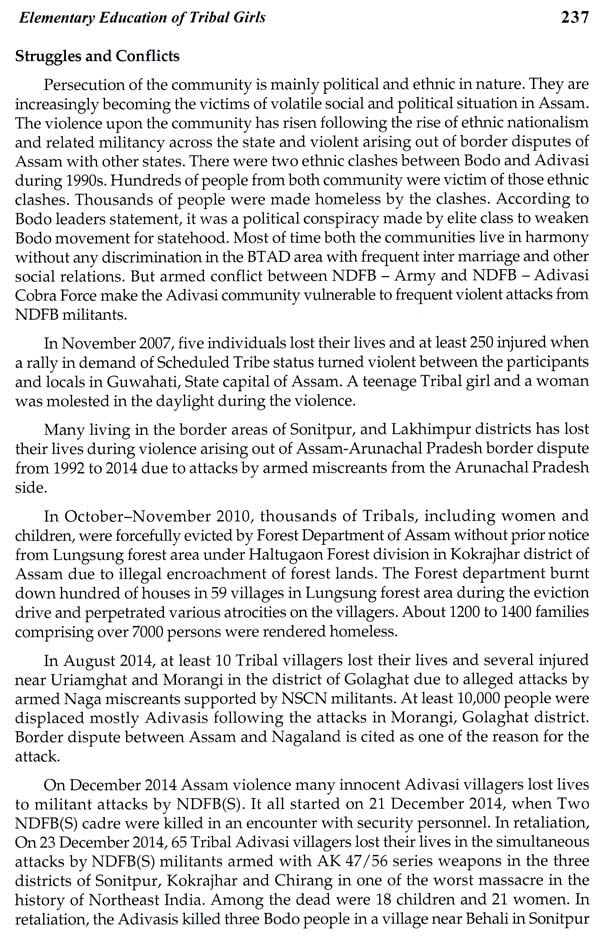
Tribal Women
Book Specification
| Item Code: | UAR266 |
| Author: | Nidhi Mishra |
| Publisher: | Peridot Literary Books |
| Language: | English |
| Edition: | 2019 |
| ISBN: | 9789389404524 |
| Pages: | 280 |
| Cover: | HARDCOVER |
| Other Details | 9.50 X 6.50 inch |
| Weight | 560 gm |
Book Description
The tribal women, constitute like any other social group, about half of the total population. The tribal women, as women in all social groups, are more illiterate than men. Like others social groups, the tribal women share problems related to reproductive health. When primary and secondary subsistence activities are counted, women work more than men. Status of women varies in different societies. The conceptual framework to analyses women's status comprise the seven roles women play in life and work: - parental, conjugal, domestic, kin, occupational, community and as an individual. All the tribal societies in the study area are patriarchal in which men dominate in public sector. However, in their own world women have a freedom, and a self-expression. With the onset of development programmes economic changes are taking place but tribal women remain traditional in their dress, language, tools and resources, because they grow food crops rather than cash crops. Modernisation is bringing changes, which affect men and women differently. India as a whole is characterised by sharp gender disparities, although women's status varies considerably by region. On virtually all frontiers of human societal pursuits-economic, educational, scientific, legal, political, official, political and religious sphere Indian women suffer profoundly. For all time there are socio cultural factors, which validate for the status of women in particular society.
Nidhi Mishra is Associate Professor, Centre for Policy Research in Higher Education. She has previously served as the Director, Dalit Studies (DS). She has a PhD in geography from Jawaharlal Nehru University and has worked on inter-group inequalities across human development indicators, focusing on the role of caste and gender-based discrimination in market and non-market institutions; diversity and discrimination within higher educational institutions, Mid-Day Meal and Anganwadi programmes and social protection policies.
The tribal women, constitute like any other social group, about half of the total population. The tribal women, as women in all social groups, are more illiterate than men. Like others social groups, the tribal women share problems related to reproductive health. When primary and secondary subsistence activities are counted, women work more than men. Status of women varies in different societies. The conceptual framework to analyses women's status comprise the seven roles women play in life and work: - parental, conjugal, domestic, kin, occupational, community and as an individual. All the tribal societies in the study area are patriarchal in which men dominate in public sector. However, in their own world women have a freedom, and a self-expression. With the onset of development programmes economic changes are taking place but tribal women remain traditional in their dress, language, tools and resources, because they grow food crops rather than cash crops. Modernisation is bringing changes, which affect men and women differently. India as a whole is characterised by sharp gender disparities, although women's status varies considerably by region. On virtually all frontiers of human societal pursuits-economic, educational, scientific, legal, political, official, political and religious sphere Indian women suffer profoundly. For all time there are socio cultural factors, which validate for the status of women in particular society.
**Contents and Sample Pages**
